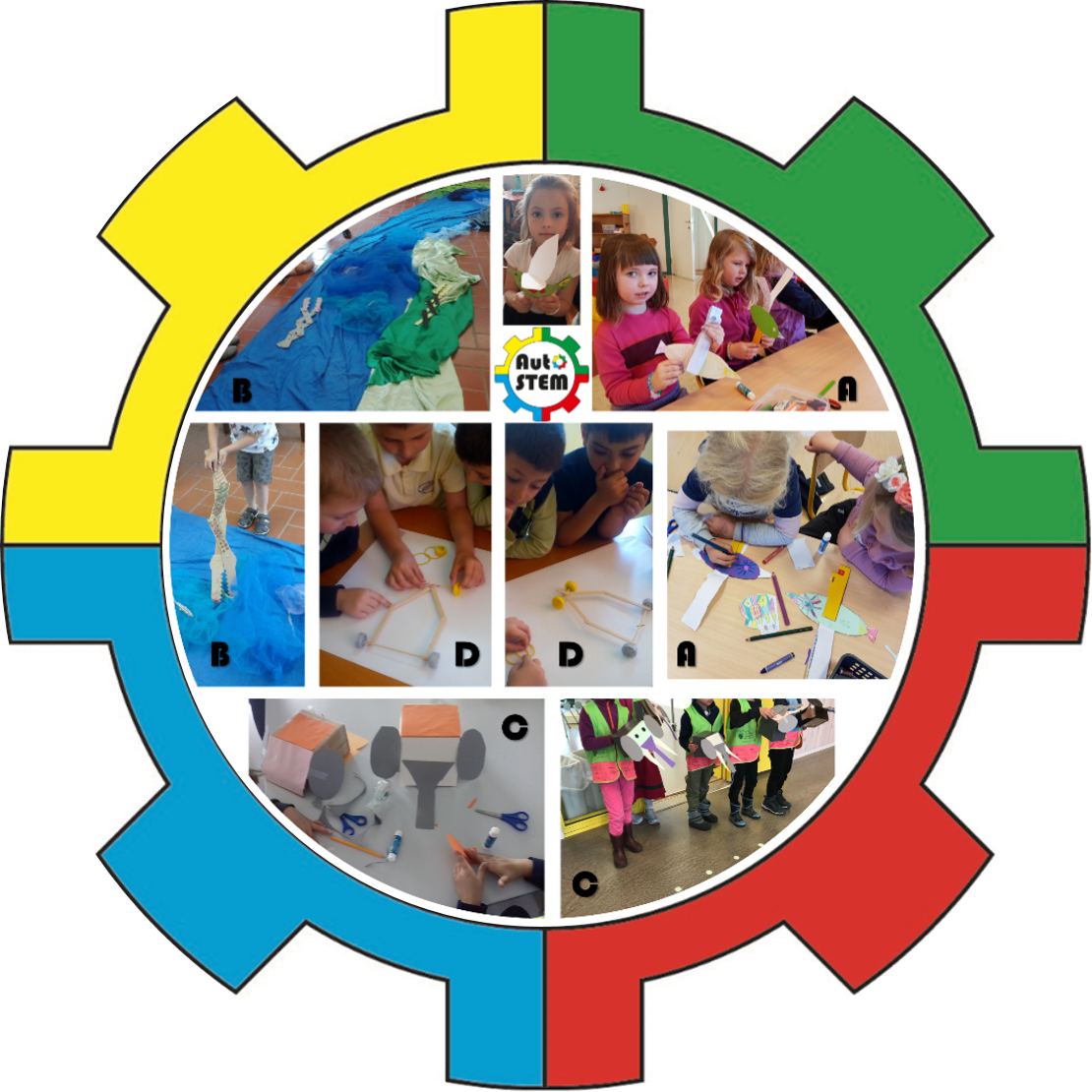Partner: University of Coimbra & Associated Partner: Agrupamento de Escolas Eugénio de Castro – Centro Escolar Solum Sul
Date: 11 December 2019
Contexts and short description
Participants in the session were 21 children, 7 and 8 years old.
The workshop started with the presentation of the automata and the construction of the JellyBird automata. Firstly, the teacher showed a model of the Jellybird. Children observed the Jellybird, and make comments and ask questions about how it functions. Teachers talked about movement in a very simple way, calling attention for the mechanism, a sliding mechanism.
The JellyBird construction process was explained. As the children were building the same, the teacher explained the next steps. First of all, the students cut out the geometric shapes that would shape the automata. After the initial stage guided by the teacher, the children continued the activity, finishing the construction and painting the prototype. There was some variability in the steps described above, given that some children started decorating the prototype before finishing its gluing and construction, while others completed the construction and only started painting. When this step was finished, the teacher proposed the elaboration of a story, about the toy constructed.
Automata produced
The analysis of the automata produced shows that in all cases, the automata mechanism is a copy of the one presented. However, some differences emerged, both in terms of the procedures followed by each child during construction, as in the part of painting or toy represented.




The stories
The stories produced by each child about the built automaton also show a high degree of creativity. In fact, the stories are all different, namely in terms of characters, plot, problematic, duration of the story.
‘The spaceship and the bird’
In this story the child tells us that there was a spaceship that didn’t know how to fly and therefore it felt sad in the middle of other spaceships that flew. That was when, on a stormy day, a bird appeared next to the spaceship that had lost his nest because it had flown and asked the spaceship to take shelter inside it. Meanwhile the bird asks the spaceship why it is sad and as soon as the spaceship says it’s because it doesn’t know how to fly the bird is readily available to teach it. After much training, the ship learns to fly and becomes friends with the bird and whenever they flew they did it together.
Other stories were produced by each child about the built automaton also show a high degree of creativity. In fact, the stories are all different, namely in terms of characters, plot, problematic, duration of the story.

Other stories produced
‘The sparkling bird’, ‘The seagull and the fish’, ‘The footballer bird’, ‘The Tonico Whale’, ‘ The green bird’, ‘ The paper bird’, ‘The bird Herb extinguishes the fire’, ‘The Luluu bird’.
The children were very creative in their stories, and these were just some of the titles, there was even a child who, with the same mold as everyone else, chose to adapt his own so that it was a whale and not a bird.

